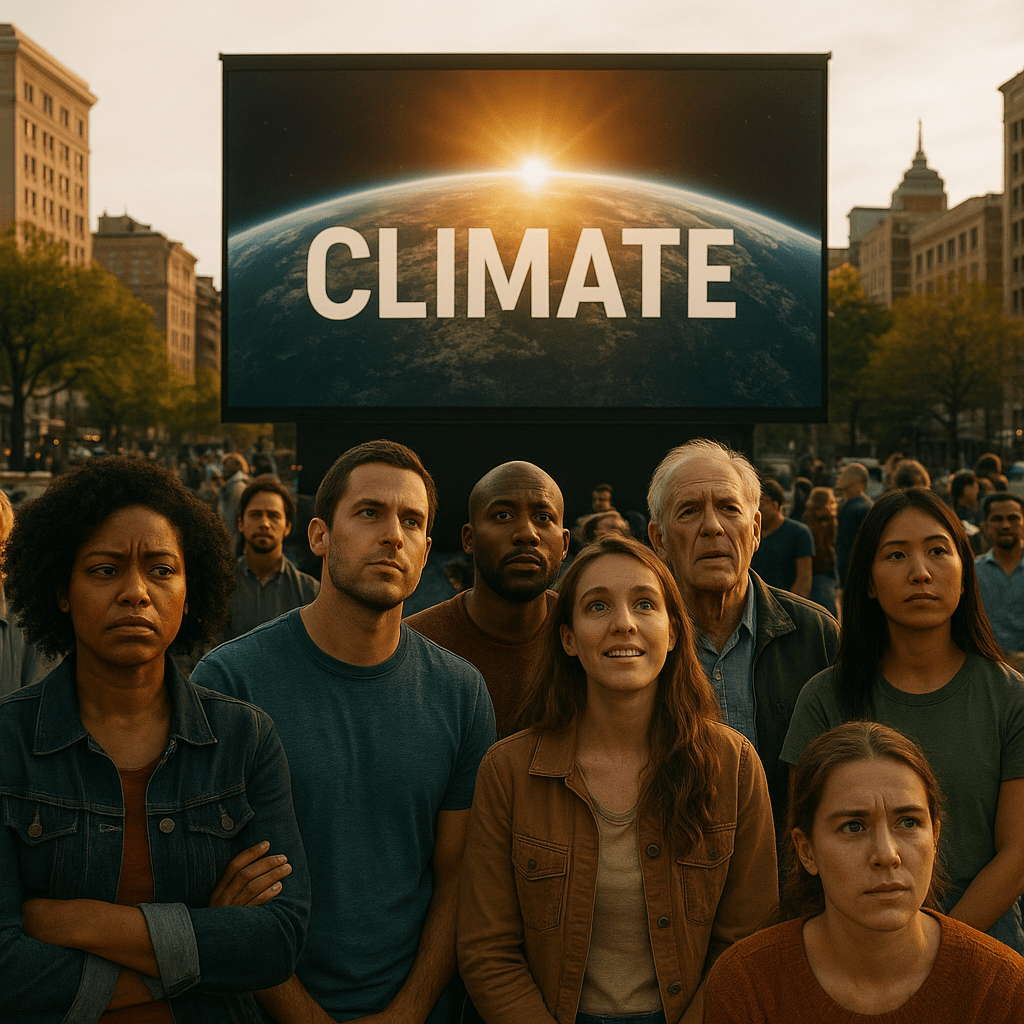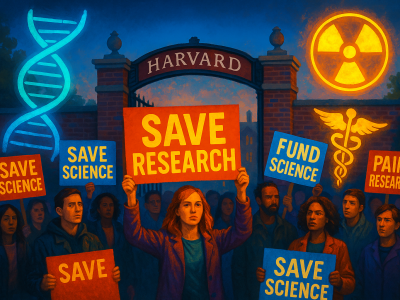When people argue about climate change, they are not just debating science. They are responding to information through deeply rooted beliefs, values and emotions. This insight lies at the heart of a new study by Connie Roser-Renouf and colleagues from the Center for Climate Change Communication at George Mason University, published in Environmental Communication.
The research, titled “Information Processing and Response Among Global Warming’s Six Americas,” explores how Americans process climate change messages based on their level of concern and involvement with the issue. It offers an evidence-based guide to understanding why facts alone rarely shift opinions and how communicators can reach different audiences more effectively.
The puzzle of persuasion
Climate change has long been one of the most polarising topics in public discourse. Despite mounting evidence and visible impacts, a significant share of the population remains sceptical or disengaged. The study set out to test a simple but powerful idea: do people who hold different beliefs about climate change actually process the same information differently?
Their findings suggest they do and that this difference goes far beyond knowledge gaps. The study reveals that the way individuals think about and feel about climate change determines whether they absorb, ignore, or even resist new information.
This is not just about attention spans. It is about the cognitive filters through which people interpret climate messages. According to the authors, understanding these filters is essential for designing communication strategies that resonate with people across the spectrum of concern.
The Six Americas: A spectrum of belief
The study draws on the Global Warming’s Six Americas framework, first developed by Maibach and colleagues in 2009. It classifies Americans into six groups based on their beliefs, attitudes and policy preferences regarding climate change:
- Alarmed: fully convinced of human-caused climate change and actively supportive of action.
- Concerned: believe the threat is real and serious but less personally engaged.
- Cautious: uncertain about the causes and risks.
- Disengaged: rarely think about the issue at all.
- Doubtful: unsure whether climate change is real, but certain humans can’t cause it.
- Dismissive: reject the science and often view climate change as a hoax.
Together, these categories represent a psychological continuum that reflects two main factors: attitudes (positive or negative views of climate science) and issue involvement (the degree of cognitive engagement). The more alarmed individuals tend to seek out, process and retain information systematically, while the sceptical or disengaged are more likely to rely on shortcuts or reject counter-evidence. Groups with low issue involvement, pay little attention to climate information, and have no firm views on the issue.
How the study was done
To test these differences, the team conducted an online experiment involving nearly 3,000 participants. Each belonged to one of the Six Americas segments and was shown short whiteboard-style videos explaining climate change concepts such as scientific consensus, impacts, solutions and underlying mechanisms.
The videos were modelled after NASA’s Earth Minutes series and designed to be clear, simple and engaging. Participants then completed surveys measuring how they processed, retained and accepted the information.
The researchers examined four key types of information processing:
- Attention – how much participants focused on the video.
- Heuristic processing – fast, automatic judgement using cues like sources, rather than content.
- Systematic processing – careful, analytical thinking about the message.
- Counter-arguing – actively disputing or rejecting the message.
By analysing these variables, the researchers could assess not only who pays attention to climate information, but how that attention translates into understanding or resistance.
What the researchers found
The results revealed a striking pattern. The more concerned the participants were about climate change, the more likely they were to give the videos their full attention and to engage in systematic processing. These individuals tended to think deeply about how the information related to their lives and policy decisions.
By contrast, the less involved or more sceptical groups relied on heuristic processing, a kind of mental shortcut based on surface cues such as who delivered the message or how many arguments were presented. Those with strong sceptical attitudes, such as the Dismissive, often engaged in counter-arguing, mentally rejecting the message even as they watched it.
Interestingly, the study also uncovered a paradox. Participants who engaged in systematic processing were more likely to accept the scientific message but slightly less likely to remember specific details. The authors suggest that thinking deeply about implications can interfere with memory of facts, a phenomenon known in cognitive psychology as processing interference.
On the other hand, those who relied on heuristics retained fewer details and were less persuaded. In short, careful thinkers were convinced but sometimes forgetful; shallow processors remembered little and remained unmoved.
Why some people reject climate facts
The study helps explain why traditional “fact-based” communication often fails. People who hold strong ideological or emotional commitments filter new information to preserve their existing worldview. This process, known as motivated reasoning, means that sceptics often reject evidence not because they misunderstand it, but because accepting it threatens their identity or values.
For instance, individuals who prioritise free-market ideology may resist evidence of human-caused climate change because it implies a need for government regulation. Others may avoid the topic altogether because it evokes feelings of helplessness or guilt.
The authors argue that communicators must therefore recognise these psychological defences. Simply presenting data or graphs is unlikely to persuade those who feel threatened by the implications. Instead, communication must appeal to shared values and trusted sources.
The middle ground: Reaching the disengaged
One of the most significant insights of the study concerns the middle segments, the Cautious, Disengaged, and Doubtful. These groups are neither strongly supportive nor strongly opposed to climate action, but they are the most likely to change their views if approached correctly.
The researchers recommend strategies that first capture attention and then foster deeper engagement. Visual imagery, relatable storytelling and trusted messengers can help overcome disinterest. Campaigns that focus on local climate risks or community solutions can also make the issue more personally relevant.
Humour and popular culture may play a surprising role. Studies cited by Roser-Renouf and colleagues show that scientists who use humour are perceived as more relatable and effective communicators. Weathercasters, too, can increase understanding by linking local weather events to broader climate trends.
Stories that stick
Storytelling, the researchers argue, is one of the most underused yet powerful tools for changing minds. Narratives engage empathy, stimulate imagination and encourage systematic processing without triggering defensive reactions.
When audiences identify with a character or storyline, they are more likely to adopt the beliefs and emotions expressed in the story. This “narrative transportation” effect can make complex scientific ideas more memorable and persuasive.
The authors point to growing evidence that entertainment media can subtly shape climate attitudes. Television storylines that integrate climate themes, for example, can normalise sustainable behaviours and inspire discussion. Research by the Norman Lear Center has shown that viewers increasingly expect climate issues to be represented in scripted content, and guidelines are now available for writers seeking to include these narratives.
From passive awareness to active engagement
While stories and visuals attract attention, lasting attitude change depends on fostering deep engagement. Roser-Renouf and her team highlight the role of interpersonal communication such as conversations with family, friends and community members, as one of the most effective ways to achieve this.
Surveys show that over 80 per cent of the “Alarmed” already talk about climate change at least occasionally, and many would be willing to volunteer in outreach if invited. Encouraging these individuals to initiate discussions could create ripple effects across social networks.
Interactive methods also help. Game-based learning, such as the “Cranky Uncle” app developed by John Cook, teaches players to recognise misinformation techniques through humour and repetition. Similarly, role-playing activities like “Six Americas, Six Views on Global Warming” allow participants to practise discussing climate issues from multiple perspectives, building empathy and critical thinking.
The impacts of climate change are continuing to grow, and we need to wake people to the threats before it’s too late.
– Connie Roser-Renouf
Lessons for communicators and policymakers
For policymakers, educators and campaigners, the implications are profound. The study confirms that how information is processed matters as much as what information is presented. Efforts to communicate climate science should therefore account for audience diversity in both cognition and motivation.
Targeting the less-engaged majority could yield the greatest impact. While the “Dismissive” minority is unlikely to shift, the four groups with weaker attitudes represent fertile ground for engagement. Reaching them requires more than data; it requires relevance, repetition, empathy and simple, clear language.
In practice, this means using trusted voices such as local leaders, teachers, health professionals and faith organisations to share climate messages. It means integrating climate themes into popular culture, and it means framing climate solutions in ways that align with everyday values like community, responsibility and innovation.
As she and her co-authors conclude, the challenge now is not simply to inform but to engage. “Most people can shift to higher levels of concern if they can be encouraged to process information more deeply,” they write. Achieving that shift may be the key to generating the social momentum needed to confront the climate crisis.
The article was co-authored by Connie Roser-Renouf, Teresa Myers and Edward Maibach.
Reference
Roser-Renouf, C., Myers, T. A., & Maibach, E. W. (2025). Information processing and response among Global Warming’s Six Americas. Environmental Communication. Advance online publication. https://doi.org/10.1080/17524032.2025.2464165
Coauthors

Teresa Myers is an Associate Research Professor at the Center for Climate Change Communication at George Mason University where for the past 15 years she has investigated activation of trusted voices to build public and political will for equitable climate solutions. She has collaborated with several federal scientific agencies, including NASA, NOAA, and the EPA, and was also involved in developing the Climate Matters program that activated the nation’s weathercasters to inform the public about climate change.

Edward Maibach, MPH, PhD., is a Distinguished University Professor Emeritus at George Mason University and is the Founding Director Emeritus of Mason’s Center for Climate Change Communication. His research focuses on understanding and promoting public engagement in climate change. He is a member of the National Academy of Medicine, a Fellow of the American Association for the Advancement of Science, and a member of the Board of Directors of the Global Climate and Health Alliance.







